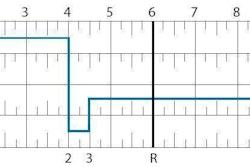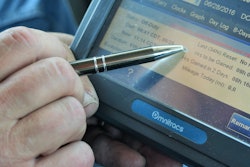My first story about the ELD mandate and its pre-2000 model year exemption after its text became available about a year ago posed a potential conundrum for owners of 2000 and newer model year trucks. The mandate said such situated owner-operators would be required to use ELDs. But given the technical specs for ELDs included in the mandate seemed to virtually require some engine control module (ECM) connectivity (common in engines from 1996 on), what if an owner-operator had put an older, fully-mechanical engine in a 2000 or newer model year truck? I held out hope back then, having not yet dug fully through the mandate, that such owners might be excluded from complying, given the seeming technical impossibility of ELD compliance utilizing such a vehicle. Such hope has lost a lot of ground since.
Attendant to subsequent stories about the ELD mandate, and in response to queries as to the determining factor for the principle exemption (for 1999 and older trucks), FMCSA simply emphasized the model year as determined by the VIN of the chassis, as is well-established by now.
Browerville, Minn.-based owner-operator Randy Carlson, then, called me last week after coming across that old story looking into his own options after news came down of the 7th circuit’s ruling in OOIDA’s case against the ELD mandate, upholding it. Carlson runs a 2001 Freightliner that “came factory with an electronic Cummins,” he says. When he bought the truck in 2010 with very low mileage because it was a “non-runner,” he “put a 3406B mechanical Cat” in it, which he utilizes today.
Carlson’s “been trucking a long time and I don’t want to have to use an ELD,” he adds. The particularly low-mileage 2001 Freightliner chassis “had sat for eight years” when he bought it. The company he purchased it from had long ago “broke a big chunk out of the block,” and the truck sat a bit more before Carlson found a wrecked International with the mechanical Caterpillar engine he put in. “I started driving it in May of 2014,” and today it’s got 563,000 miles on it.
His mechanicking background — 10 years professionally in the 1980s/early ’90s, then on his own trucks since the 1990s — makes such older engines attractive to him for the simple fact that he’s got the know-how and willingness to work on them himself. The relatively low mileage of the Freightliner it’s in, too, is attractive for related reasons.
With the ELD mandate, however, his particular running unit is in something of a double bind. As noted, it will need an electronic logging device. The ELD mandate final rule makes an allowance for this sort of situation, a fact I didn’t make note of in that brief bit of first reporting a year ago, in Appendix B, section 4.2:
(b) An ELD used while operating a CMV that is a model year 2000 or later model year, as indicated by the vehicle identification number (VIN), that has an engine 414 electronic control module (ECM) must establish a link to the engine ECM when the CMV’s engine is powered and receive automatically the engine’s power status, vehicle’s motion status, miles driven value, and engine hours value through the serial or Control Area Network communication protocols supported by the vehicle’s engine ECM. If the vehicle does not have an ECM, an ELD may use alternative sources to obtain or estimate these vehicle parameters with the listed accuracy requirements under section 4.3.1 of this appendix.









